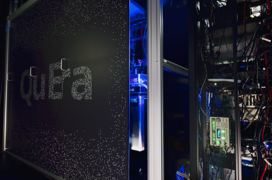The National Oceanic and Atmospheric Administration (NOAA) has launched two new supercomputers.
Two HPE Cray systems – known as Dogwood and Cactus – each operate at a speed of 12.1 petaflops. The machines are located in Manassas, Virginia, and Phoenix, Arizona, respectively.
The new supercomputers, first announced in February 2020 with a contract award to General Dynamics Information Technology (GDIT), are a ‘significant upgrade’ to the agency’s Weather and Climate Operational Supercomputing System, offering three times the performance of the prior systems.
They replace NOAA’s previous Cray and IBM/Dell supercomputers – Luna and Mars in Reston, Virginia, and Surge and Venus in Orlando, Florida.
“Accurate weather and climate predictions are critical to informing public safety, supporting local economies, and addressing the threat of climate change,” said US Secretary of Commerce Gina M. Raimondo. “Through strategic and sustained investments, the US is reclaiming a global top spot in high-performance computing to provide more accurate and timely climate forecasts to the public.”
“More computing power will enable NOAA to provide the public with more detailed weather forecasts further in advance,” said NOAA Administrator, Rick Spinrad, Ph.D. “Today’s supercomputer implementation is the culmination of years of hard work by incredible teams across NOAA — everyone should be proud of this accomplishment.”
The new supercomputers will enable an upgrade to the US Global Forecast System (GFS) this fall and the launch of a new hurricane forecast model called the Hurricane Analysis and Forecast System (HAFS), slated to be in operation for the 2023 hurricane season pending tests and evaluation.
“This is a big day for NOAA and the state of weather forecasting,” said Ken Graham, director of NOAA’s National Weather Service. “Researchers are developing new ensemble-based forecast models at record speed, and now we have the computing power needed to implement many of these substantial advancements to improve weather and climate prediction.”
Coupled with NOAA’s research and development supercomputers in West Virginia, Tennessee, Mississippi, and Colorado, which have a combined capacity of 18 petaflops, NOAA now has a supercomputing capacity of 42 petaflops.
Under the initial 8-year contract with a two-year optional renewal, GDIT designed and serves as owner/operator of the computers with the responsibility to maintain them and provide all supplies and services, including labor, facilities, and computing components.







